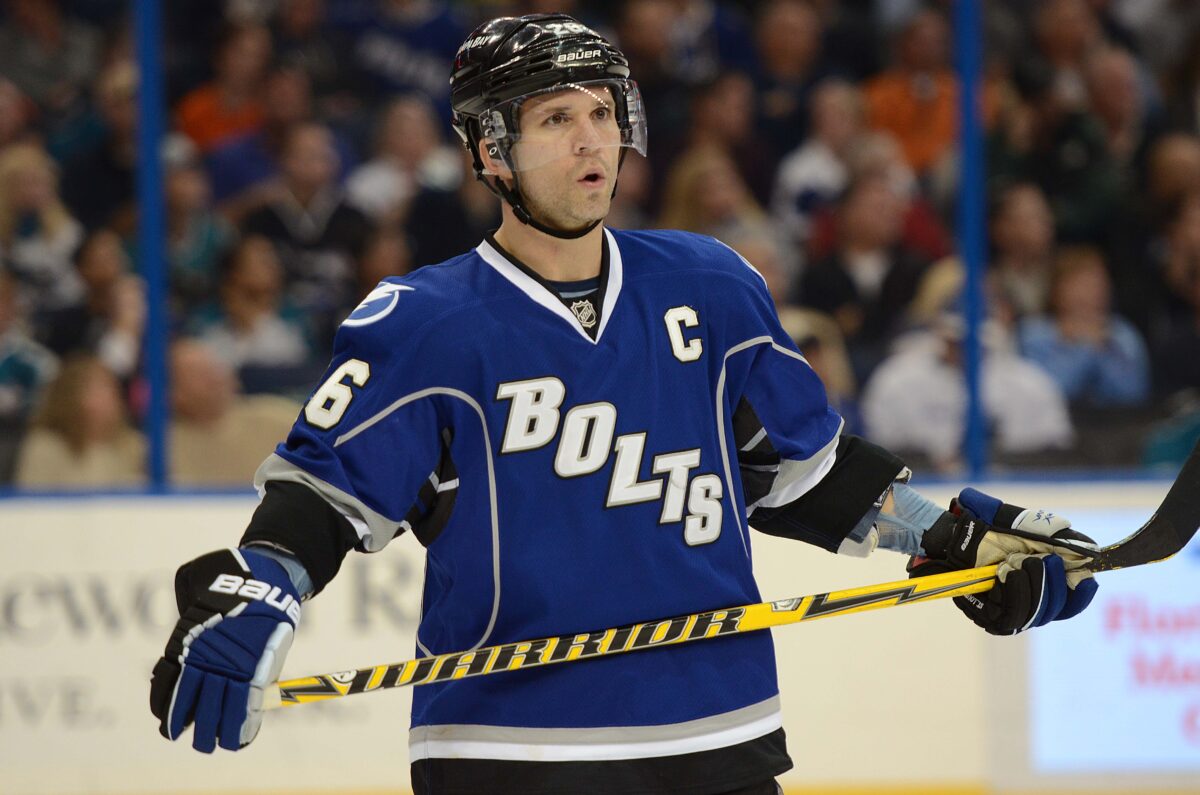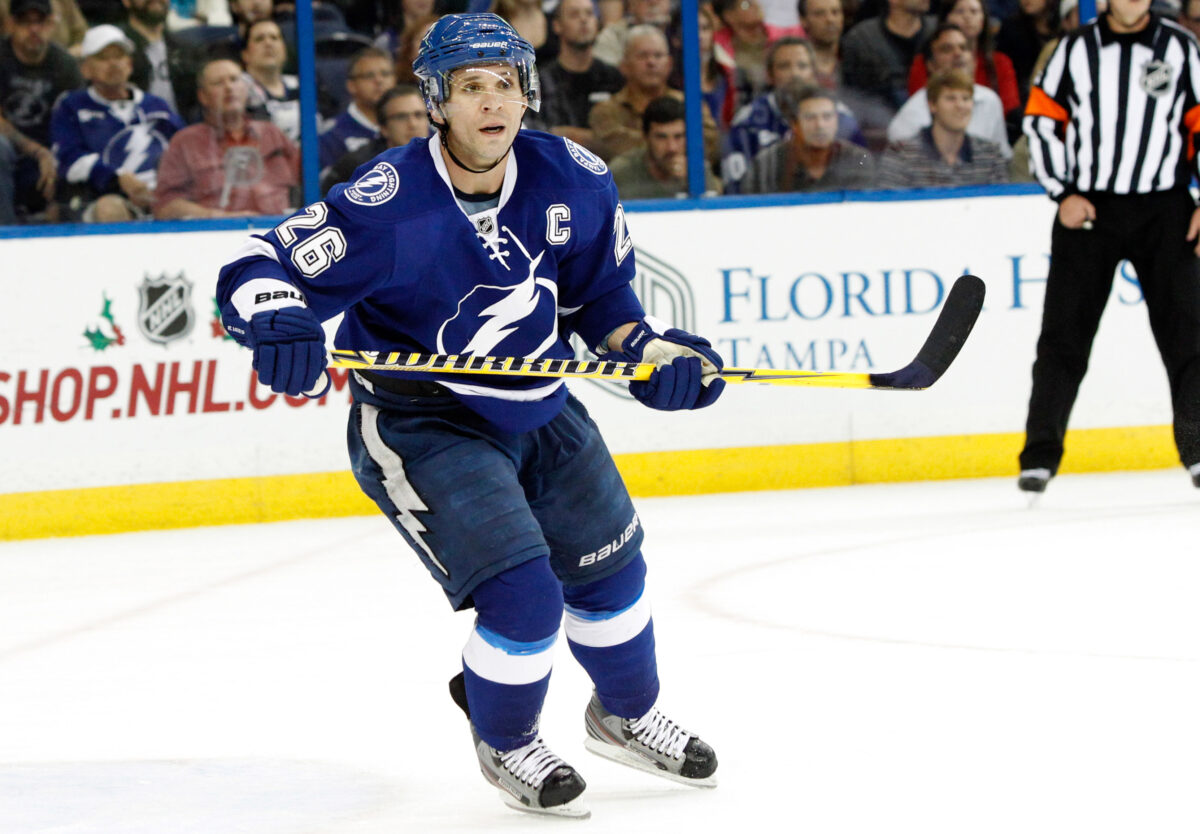Just over one quarter-century ago, the Tampa Bay Lightning gave an undersized and undrafted 25-year-old forward a chance. It would end up changing their franchise forever. The signing of Martin St. Louis, known by many in the hockey world as “Marty,” would surprise everyone by becoming a top player of his generation and ultimately left a legacy in the Tampa Bay area.
Let’s look back at how an unlikely success story of one man helped create the unlikely success story of hockey thriving in a non-traditional market.
An Unlikely Face of the Franchise
Here’s a little backstory of how it all came to be.
The subheading saying he was unlikely to be the face of an NHL team is an understatement. Catching the attention of any organization was more excruciating than pulling teeth. How tall he is listed can vary by an inch or two, but he’s listed as 5-foot-8 on Hockey Reference. He was small, and the undrafted free agent didn’t play his first NHL game until age 23. He made his NHL debut with the Calgary Flames during the 1998-99 season, the same season that the Lightning drafted his eventual partner in crime, Vincent Lecavalier. After two seasons, they moved on from him.

He chose the Lightning in free agency in the hopes of getting more playing time. The Lightning were coming off a 19-47-9-7 finish in 1999-00. Anyone can help at that point. Throw whoever on the ice and see who sticks.
In his first season with the team, he had 18 goals and 22 assists for 40 points in 78 games. He followed that up with 16 goals and 19 assists for 35 points in 53 games. He saw improvement in average production per season. He averaged 0.51 points per game in 2000-01 and then 0.66 points per game in 2001-02.
Related: Revisiting the Lightning’s Blockbuster Trade for Blake Coleman
Had this been St. Louis’ ceiling for what he could do in the NHL, that would still be a success. He’d had a place in the bottom six of nearly every NHL team, and that would have been nothing to scoff at. But he wasn’t done. A breakout was imminent.
He played all 82 games of the 2002-03 season, tallying 33 goals and 37 assists for 70 points. Suddenly, he’s top-six material and is being named an All-Star. He helped the Lightning reach the playoffs for just the second time in team history. They finished first in the Southeast Division and reached the Conference Semi-Final (second round).
The timing of a breakout couldn’t be better with what was brewing in Tampa Bay. The following season, both he and the team took another massive leap forward. St. Louis was once again an All-Star, but this time, he won the Art Ross Trophy (the award that goes to the scoring champion in the NHL) with 94 points. He also took home the Hart Trophy (the NHL’s MVP) and finished fourth in Selke Trophy voting (the award for the top defensive forward).
As for the Lightning, they won their first Stanley Cup. He didn’t win the Conn Smythe, but St. Louis was a playoff hero against his former team, the Flames. His double-overtime goal in Game 6 forced a Game 7 that the Lightning would ultimately win.
A franchise in disarray went from being at the bottom of the standings with little star power to Stanley Cup champions and having a future Hockey Hall of Famer in just a few years.
His Recognitions For His Impact on the Lightning (and NHL)
St. Louis’ awards have already been mentioned, but he’s picked up more honors in retirement. Following his retirement, the Lightning hung No. 26 from the rafters, becoming the first in franchise history to have his number retired.
Then Lightning captain Steven Stamkos said that St. Louis “…was, still is, and forever will be the heart and soul of this organization.”

St. Louis was inducted into the Hockey Hall of Fame in 2018. While he wasn’t the first inducted to have played for the Lightning, he is arguably the first true Lightning player to be enshrined. To elaborate further, he’s the first to represent this franchise above any other. Even Dave Andreychuk, who was a team captain and fellow 2004 Stanley Cup champion, has 12 years with the Buffalo Sabres that multiple generations of fans aren’t overlooking.
While being in the Hockey Hall of Fame is the highest honor in the sport, the biggest honor he’s had related to the Lightning was his team Hall of Fame induction. To be more specific, how he was inducted. He and Lecavalier were automatic inductees. Both were such obvious picks that they just started off inducted, leaving fans to vote on other players. You have to leave a significant impact to bypass a vote.
St. Louis’ Impact on the Growth of Hockey in Tampa Bay
What St. Louis did for the Lightning in turn was pivotal for the growth of hockey in the Tampa Bay area. Previously, I wrote about how much hockey has grown in the area since Stamkos was drafted. While that impact was very real, somebody had to help get the team to that point in their history.
Forget overall team success. They probably don’t win a Cup without him. Sure, there is a good chance this team eventually becomes the strong franchise they are anyway. That’s also probably the case. Jeff Vinik’s strategy would change everything. Let’s think a little deeper.
St. Louis provided the team with a face, along with Lecavalier, for fans to latch onto for over a dozen seasons. Even during some brutal seasons on the ice, in which attendance suffered as a result, having those consistent faces kept the team afloat. They had the former Stanley Cup hero to go see. That definitely swayed some people.
One fewer star means fewer kids growing up in the area have someone to idolize. I’ll be one of the first to credit St. Louis as a major reason I became a hockey fan. I’m not alone in that sentiment among Tampa Bay hockey fans of my generation. Not having Marty doesn’t mean you simply look up to Vinny or anyone else on the team. That’s not how kids think. They sometimes just pick a different interest, whether it be another sport or something else entirely.
Having stars like St. Louis prevented a lost generation. He bridged the gap between those who got hooked watching games at the Thunderdome in the 1990s and those who fell in love with the team in the 2010s and beyond. A lot of teams can’t say they had that guy, and it was a steeper climb as a result. The Lightning and the Tampa Bay area as a whole can say that, and it helped make them the franchise and region, and the team and hockey market they are today.
